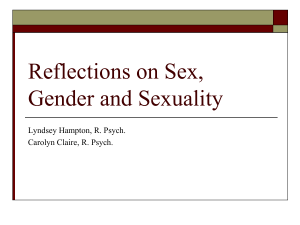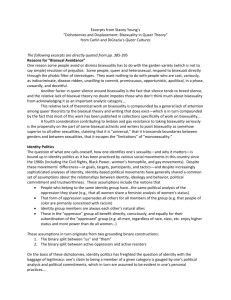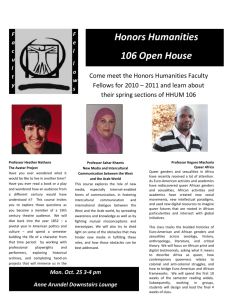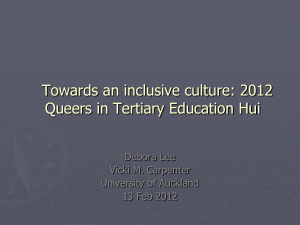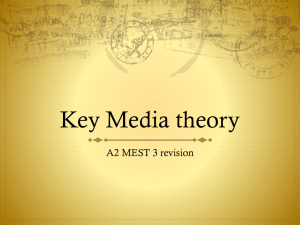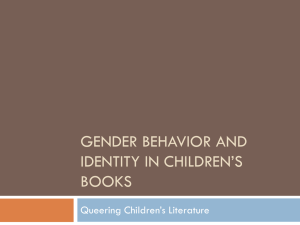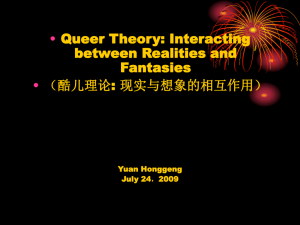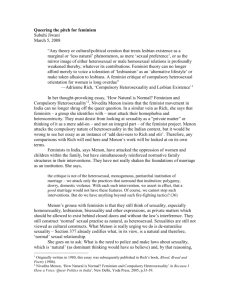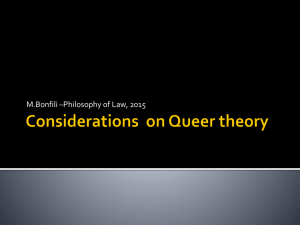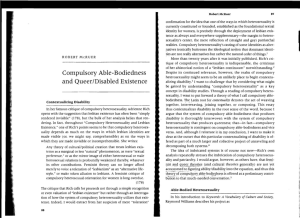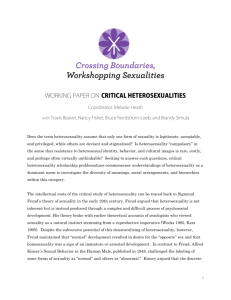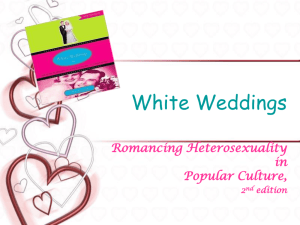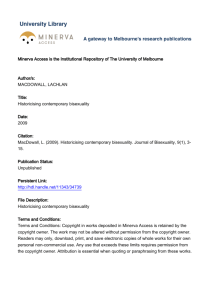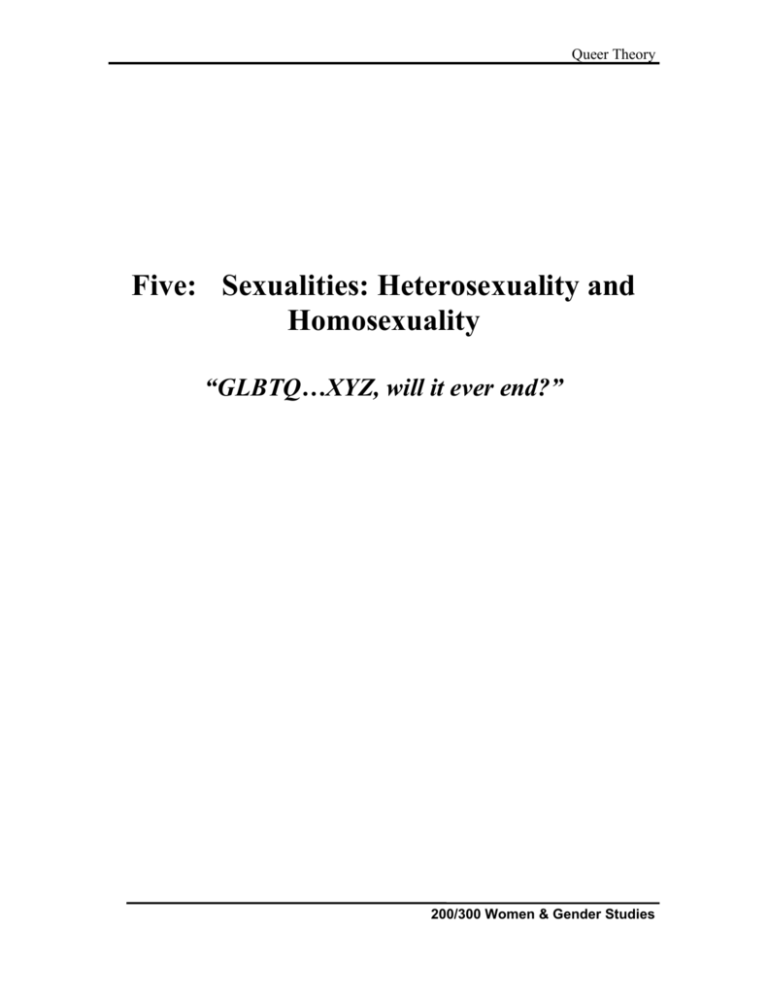
Queer Theory
Five: Sexualities: Heterosexuality and
Homosexuality
“GLBTQ…XYZ, will it ever end?”
200/300 Women & Gender Studies
Queer Theory
Introduction
The main purpose of these pages is to provide an outline of discussion for class purposes.
Each set of notes is organized around three basic themes:
I.
A brief overview of the subject matter.
II.
An outline of the “basic principles” regarding the subject matter.
III.
A brief evaluation of the subject matter.
Page 2
Queer Theory
I. A brief overview of the subject matter.
-Review of readings:
“(Queer) Youth as Political and Pedagogical” by Nelson Rodriguez
“Gender Criticism: What Isn’t Gender” by Eve Kosofsky Sedgwick
-Focus of discussion:
Part of understanding the concept of queer is trying to understand the ideas behind
sexuality. In this section we will look at sexualities homosexual, heterosexual, bisexual,
and others.
-Note:
It is important to remember that being queer is not a type of sexuality. Being
queer can be a second part of self-identification. This will be discussed more in the next
section “Queer within the Community.”
Page 3
Queer Theory
II. An outline of the “basic principles” regarding the subject matter.
-What is homosexual?
adj. Involving, related to, or characterized by a sexual propensity for one's
own sex; of or involving sexual activity with a member of one's own sex, or
between individuals of the same sex.
n. A person who has a sexual propensity for his or her own sex; esp. one
whose sexual desires are directed wholly or largely towards people of the
same sex. In non-technical contexts it is often taken to mean a male
homosexual, a female one being termed a lesbian.
-What is heterosexual?
a. Characterized by a sexual interest in members of the opposite sex.
b. Pertaining to sexual relations between people of opposite sex.
-What is bisexual?
Of two sexes; spec. having both sexes in the same individual.
Sexually attracted to individuals of both sexes.
Page 4
Queer Theory
III. A brief evaluation of the subject matter.
-Homosexuality/Heterosexuality:
The term homosexuality was first used in 1892 by G. Chaddock.
The term heterosexuality came as a response to homosexuality.
Homosexuality and heterosexuality are set as binary opposites to each other
In a sense, what one is the other is not
-Bisexuality:
Bisexual as a term was first used in 1824
i
Bisexuality is a deconstructor of the binary opposition of heterosexual and
homosexual
Is bisexuality is viewed as a “third kind” of sexual identity, which is located
“between or beyond homosexuality and heterosexuality?
Or is it something that puts in question the very concept of sexual identity in
the first place?
Why, instead of hetero-, homo-, auto-, pan-, and bisexuality, do we not simply
say “sexuality”?
Does bisexuality have something fundamental to teach us about the nature of
human eroticism?”i
Marjorie Garber, Bisexuality & the Eroticism of Everyday Life (New York: Routledge, 2000), p. 15.
Page 5


